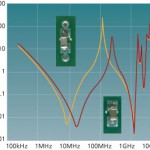
Low Power 2009

All things to all men
Welcome to EDA Tech Forum’s low-power edition. Beginning with last year’s special focusing on PCBs, we began to take these occasional steps sideways from a broad-based agenda to concentrate on particularly active slices of the design world. Low-power has been a ‘hot button’ for some time, and the market originally fueled its importance. Cell phones […]
Advanced RTL power-aware verification
Traditional verification tools struggle to deal with today’s increasingly sophisticated power management technologies. One major limitation is that they cannot deal with varying power states because they make a built-in assumption that devices are always fully powered on. Further, power-aware verification at the register-transfer level is proving increasingly problematic, although it is also becoming increasingly […]
Access all areas
Since 130nm, you have either had an innovative approach to low-power design, or you have not had a business. From that node onwards, low-power requirements began to match raw performance in driving the R&D agenda. Where the cutting edge was once defined by communications infrastructure and programmable logic, consumer electronics (CE) started to become ever […]
A pulsed UWB receiver SoC for insect motion control
The article describes the context and need for embedded operating systems that are more responsive to the power management demands placed on today’s electronic devices. It reviews the design objectives for the two main types of power management, reactive and proactive, and examines how both can be implemented. For decades, scientists and engineers have been […]
A holistic approach to low-power verification
The article describes a dedicated low-power functional verification methodology, originally developed at STMicroelectronics (now ST-Ericsson). The article details the content, sequence and effectiveness of the methodology as it was tested on a 45nm system-on-chip design. In order of use, the main components are: A high-level verification language testbench Formal verification Rule checking C function library […]
The art of low-power physical design
The architectures that underpin today’s traditional place-and-route tools are showing their age, largely because their static timing analysis engines cannot handle more than two mode/corner scenarios. Thus limited, the software struggles to effectively implement low-power design techniques beyond such established concepts as clock gating and multiple threshold voltages. Designers run into difficulties when trying to […]
Make simulation your friend
The earlier in a design cycle a decision can be made, the shorter the development time and the lower the development cost. This is probably the most important product development principle, and is especially true when interconnects are not transparent and signal or power integrity could be holding back performance. You must find, fix and […]
Find your low-power path
Semiconductor vendors face increasing demands to lower power consumption. This trend has intensified in the last couple of years with the rejuvenation of the ‘green’ movement. In response, the industry has been getting smarter about low-voltage design, current-saving techniques for both the circuit and process levels, and coordinated power management. Meanwhile, programmers are concentrating on […]